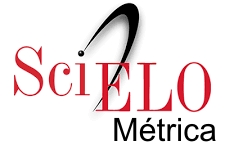Etiopatogenia e implicancia pronóstica en el infarto de miocardio sin obstrucción de las arterias coronarias epicárdicas (MINOCA)
Resumen
El infarto de miocardio sin obstrucción de las arterias coronarias (MINOCA) es un síndrome clínico caracterizado por la evidencia clínica de infarto de miocardio con arterias coronarias normales o con estenosis no significativas en la angiografía coronaria igual o menor a 50%. El MINOCA es un síndrome clínico con múltiples etiologías que pueden afectar tanto los vasos epicárdicos como la microcirculación, con una prevalencia de 6%. Se debe realizar un enfoque de medicina personalizado mediante el cual los pacientes con diferentes subtipos de angina, definidos por los resultados de pruebas coronarias de funcionalidad, puedan beneficiarse de una terapia individualizada y dirigida. Se requiere de un caudal mayor de investigación para determinar si este enfoque puede conducir al paciente a beneficios clínicos. Las pruebas invasivas más generalizadas permiten la identificación de subgrupos de diagnóstico para el desarrollo de terapias dirigidas guiado por estudios mecanicistas. El manejo terapéutico depende de la causa que lo origina, si es que llega a ser identificada. El pronóstico es variable, dependiendo de la causa, y en muchos casos es similar a aquellos casos con obstrucción coronaria. El diagnóstico correcto de la causa subyacente de la angina permite el tratamiento preciso, específico y estratificado de los diferentes tipos de causa etiológica. Esta manera de actuar ha demostrado que este enfoque es seguro, factible y con beneficios demostrables para los pacientes con MINOCA.
Citas
Thygesen K, Alpert JS, Jaffe AS, Simoons ML, Chaitman BR, White HD, et al. Third universal definition of myocardial infarction. Eur Heart J. 2012; 33(20): 2551–67.
Niccoli G, Scalone G, Crea F. Acute myocardial infarction with no obstructive coronary atherosclerosis: mechanisms and management. Eur Heart J. 2015;36(8):475-81.
Pasupathy S, Air T, Dreyer RP, Tavella R, Beltrame JF. Systematic review of patients presenting with suspected myocardial infarction and nonobstructive coronary arteries. Circulation. 2015;131(10):861-70.
Crea F, Liuzzo G. Pathogenesis of acute coronary syndromes. J Am Coll Cardiol. 2013;61(1):1-11.
Agewall S, Beltrame JF, Reynolds HR, Niessner A, Rosano G, Caforio AL, et al. ESC working group position paper on myocardial infarction with non-obstructive coronary arteries. Eur Heart J. 2017; 38(3):143-53.
Ong P, Athanasiadis A, Sechtem U. Pharmacotherapy for coronary microvascular dysfunction. Eur Heart J Cardiovasc Pharmacother. 2015; 1(1):65-71.
Tornvall P, Gerbaud E, Behaghel A, Chopard R, Collste O, Laraudogoitia E, et al. Myocarditis or "true" infarction by cardiac magnetic resonance in patients with a clinical diagnosis of myocardial infarction without obstructive coronary disease: A meta-analysis of individual patient data. Atherosclerosis. 2015; 241(1):87-91.
Shibata T, Kawakami S, Noguchi T, Tanaka T, Asaumi Y, Kanaya T, et al. Prevalence, clinical features, and prognosis of acute myocardial infarction attributable to coronary artery embolism. Circulation. 2015; 132(4):241-50.
Alfonso F, Paulo M, Dutary J. Endovascular imaging of angiographically invisible spontaneous coronary artery dissection. JACC Cardiovasc Interv. 2012; 5(4):452-3.
Sandoval Y, Smith SW, Thordsen SE, Apple FS. Supply/demand type 2 myocardial infarction: should we be paying more attention?. J Am Coll Cardiol. 2014; 63(20):2079-87.
Bière L, Niro M, Pouliquen H, Gourraud JB, Prunier F, Furber A, Probs V. Risk of ventricular arrhythmia in patients with myocardial infarction and non-obstructive coronary arteries and normal ejection fraction. World J Cardiol. 2017;9(3):268-276.
Alderete JF, Torales JM García LB, Centurión OA. Myocardial infarction and non-obstructive coronary arteries (MINOCA) associated to diastolic dysfunction of the left ventricle. J Cardiol Curr Resi. 2018; 11(4):161-4. doi:10.15406/jccr.2018.11.00391.
Choo EH, Chang K, Lee KY, Lee D, Kim JG, Ahn Y, et al. Prognosis and predictors of mortality in patients suffering myocardial infarction with non-obstructive coronary arteries. J Am Heart Assoc. 2019; 8(14):e011990. doi:10.1161/JAHA.119.011990.
Ballesteros-Ortega D, Martínez-González O, Gómez-Casero RB, Quintana-Díaz M, de Miguel-Balsa E, Martín-Parra C, et al. Characteristics of patients with myocardial infarction with nonobstructive coronary arteries (MINOCA) from the ARIAM-SEMICYUC registry: development of a score for predicting MINOCA. Vasc Health Risk Manag. 2019;15:57-67. doi:10.2147/VHRM.S185082.
Ford TJ, Berry C. How to Diagnose and Manage Angina Without Obstructive Coronary Artery Disease: Lessons from the British Heart Foundation CorMicA Trial. Interv Cardiol. 2019; 14(2):76–82. doi:10.15420/icr.2019.04.R1.
Beijk MA, Vlastra WV, Delewi R, van de Hoef TP, Boekholdt SM, Sjauw KD, Piek JJ. Myocardial infarction with non-obstructive coronary arteries: a focus on vasospastic angina. Neth Heart J. 2019; 27(5):237-45. doi:10.1007/s12471-019-1232-7.
Gandhi H, Ahmed N, Spevack DM. Prevalence of myocardial infarction with non-obstructive coronary arteries (MINOCA) amongst acute coronary syndrome in patients with antiphospholipid syndrome. Int J Cardiol Heart Vasc. 2019; 22: 148-149. doi:10.1016/j.ijcha.2018.12.015.
Ong P, Camici PG, Beltrame JF, Crea F, Shimokawa H, Sechtem U, et al. International standardization of diagnostic criteria for microvascular angina. Int J Cardiol. 2018; 250:16-20. doi:10.1016/j.ijcard.2017.08.068.
Tavella R, Cutri N, Tucker G, Adams R, Spertus J, Beltrame JF. Natural history of patients with insignificant coronary artery disease. Eur Heart J Qual Care Clin Outcomes. 2016; 2(2):117-24.
Gould KL, Johnson NP. Coronary physiology beyond coronary flow reserve in microvascular angina: JACC State-of-the-art review. J Am Coll Cardiol. 2018; 72(21):2642–62. doi:10.1016/j.jacc.2018.07.106.
Ford TJ, Corcoran D, Berry C. Coronary artery disease: physiology and prognosis. Eur Heart J. 2017; 38(25):1990-2. doi:10.1093/eurheartj/ehx226.
Ford TJ, Berry C, De Bruyne B, Yong ASC, Barlis P, Fearon WF, Ng MKC. Physiological predictors of acute coronary syndromes: emerging insights from the plaque to the vulnerable patient. JACC Cardiovasc Interv. 2017; 10(24):2539–47. doi:10.1016/j.jcin.2017.08.059.
Raphael CE, Cooper R, Parker KH, Collinson J, Vassiliou V, Pennell DJ, et al. Mechanisms of myocardial ischemia in hypertrophic cardiomyopathy: insights from wave intensity analysis and magnetic resonance. J Am Coll Cardiol. 2016; 68(15):1651–60. doi:10.1016/j. jacc.2016.07.751.
Ahn JH, Kim SM, Park SJ, Jeong DS, Woo MA, Jung SH, et al. Coronary microvascular dysfunction as a mechanism of angina in severe as: prospective adenosine-stress CMR study. J Am Coll Cardiol. 2016; 67(12):1412–22. doi:10.1016/j.jacc.2016.01.013.
Pelliccia F, Pasceri V, Niccoli G, Tanzilli G, Speciale G, Gaudio C, et al. Predictors of Mortality in Myocardial Infarction and Nonobstructed Coronary Arteries: A Systematic Review and Meta-Regression. Am J Med. 2019. pii: S0002-9343(19)30530-3. doi: 10.1016/j.amjmed.2019.05.048.
Ibanez B, James S, Agewall S, Antunes MJ, Bucciarelli-Ducci C, Bueno H, et al. 2017 ESC guidelines for the management of acute myocardial infarction in patients presenting with ST-segment elevation: the task force for the management of acute myocardial infarction in patients presenting with ST-segment elevation of the European Society of Cardiology (ESC). Eur Heart J. 2018; 39(2):119-77.
Heidecker B, Ruedi G, Baltensperger N, Gresser E, Kottwitz J, Berg J, et al. Systematic use of cardiac magnetic resonance imaging in MINOCA led to a five-fold increase in the detection rate of myocarditis: a retrospective study. Swiss Med Wkly. 2019;149:w20098. doi: 10.4414/smw.2019.20098.
Ford TJ, Corcoran D, Berry C. Stable coronary syndromes: pathophysiology, diagnostic advances and therapeutic need. Heart. 2018; 104(4):284-92.
Vlastra W, Piek M, van Lavieren MA, Hassell MEJC, Claessen BE, Wijntjens GW, et al. Long-term outcomes of a Caucasian cohort presenting with acute coronary syndrome and/or out-of-hospital cardiac arrest caused by coronary spasm. Neth Heart J. 2018; 26(1):26-33.
Bairey Merz CN, Pepine CJ, Walsh MN, Fleg JL. Ischemia and No Obstructive Coronary Artery Disease (INOCA): developing evidence-based therapies and research agenda for the next decade. Circulation. 2017; 135(11):1075-92.
Montone RA, Niccoli G, Russo M, Giaccari M, Del Buono MG, Meucci MC, et al. Clinical, angiographic and echocardiographic correlates of epicardial and microvascular spasm in patients with myocardial ischaemia and non-obstructive coronary arteries. Clin Res Cardiol. 2019. doi: 10.1007/s00392-019-01523-w.
Gould KL, Johnson NP. Imaging coronary blood flow in AS: let the data talk, again. J Am Coll Cardiol. 2016; 67(12):1423–6. doi:10.1016/j.jacc.2016.01.053.
Gue YX, Corballis N, Ryding A, Kaski JC, Gorog DA. MINOCA presenting with STEMI: incidence, aetiology and outcome in a contemporaneous cohort. J Thromb Thrombolysis. 2019;48(4):533-538. doi: 10.1007/s11239-019-01919-5.
Taqueti VR, Di Carli MF. Coronary microvascular disease pathogenic mechanisms and therapeutic options : JACC State-of-the-Art Review. J Am Coll Cardiol. 2018; 72(21):2625–41. doi:10.1016/j.jacc.2018.09.042.
Ford TJ, Stanley B, Good R, Rocchiccioli P, McEntegart M, Watkins S, et al. Stratified medical therapy using invasive coronary function testing in angina: the CorMicA trial. J Am Coll Cardiol. 2018; 72(23 PtA):2841–55. doi:10.1016/j.jacc.2018.09.006.
Ford TJ, Corcoran D, Oldroyd KG, McEntegart M, Rocchiccioli P, Watkins S, et al. Rationale and design of the British Heart Foundation (BHF) Coronary Microvascular Angina (CorMicA) stratified medicine clinical trial. Am Heart J. 2018; 201:86–94. doi:10.1016/j.ahj.2018.03.010.
Beltrame JF, Crea F, Kaski JC, Ogawa H, Ong P, Sechtem U, et al. International standardization of diagnostic criteria for vasospastic angina. Eur Heart J. 2017; 38(33):2565–8. doi:10.1093/eurheartj/ehv351.
Gaibazzi N, Martini C, Botti A, Pinazzi A, Bottazzi B, Palumbo AA. Coronary Inflammation by Computed Tomography Pericoronary Fat Attenuation in MINOCA and Tako-Tsubo Syndrome. J Am Heart Assoc. 2019;8(17):e013235. doi: 10.1161/JAHA.119.013235.
Taqueti VR, Solomon SD, Shah AM, Desai AS, Groarke JD, Osborne MT, et al. Coronary microvascular dysfunction and future risk of heart failure with preserved ejection fraction. Eur Heart J. 2018; 39(10):840-9. doi:10.1093/eurheartj/ehx721.
Redfield MM, Anstrom KJ, Levine JA, Koepp GA, Borlaug BA, Chen HH, et al. Isosorbide mononitrate in heart failure with preserved ejection fraction. N Engl J Med. 2015; 373(24):2314–24. doi: 10.1056/NEJMoa1510774.
Shah NR, Cheezum MK, Veeranna V, Horgan SJ, Taqueti VR, Murthy VL, et al. Ranolazine in symptomatic diabetic patients without obstructive coronary artery disease: impact on microvascular and diastolic function. J Am Heart Assoc. 2017; 6(5) pii: e005027. doi:10.1161/jaha.116.005027.
Bairey Merz CN, Handberg EM, Shufelt CL, Mehta PK, Minissian MB, Wei J, et al. A randomized, placebo-controlled trial of late Na current inhibition (ranolazine) in coronary microvascular dysfunction (CMD): impact on angina and myocardial perfusion reserve. Eur Heart J. 2016; 37(19):1504-13. doi:10.1093/eurheartj/ehv647.
Corcoran D, Ford TJ, Hsu LY, Chiribiri A, Orchard V, Mangion K, et al. Rationale and design of the Coronary Microvascular Angina Cardiac Magnetic Resonance Imaging (CorCMR) diagnostic study: the CorMicA CMR sub-study. Open Heart. 2018; 5(2):e000924. doi: 10.1136/openhrt-2018-000924.
Ford TJ, Rocchiccioli P, Good R, McEntegart M, Eteiba H, Watkins S, et al. Systemic microvascular dysfunction in microvascular and vasospastic angina. Eur Heart J. 2018; 39(46):4086-97. doi: 10.1093/eurheartj/ehy529.
Gupta RM, Hadaya J, Trehan A, Zekavat SM, Roselli C, Klarin D, et al. A genetic variant associated with five vascular diseases is a distal regulator of endothelin-1 gene expression. Cell. 2017; 170(3):522-33.e15.
Berry C, Sidik N, Pereira AC, Ford TJ, Touyz RM, Kaski JC, Hainsworth AH. Small-vessel disease in the heart and brain: current knowledge, unmet therapeutic need, and future directions. J Am Heart Assoc. 2019; 8(3):e011104. doi:10.1161/JAHA.118.011104.

















